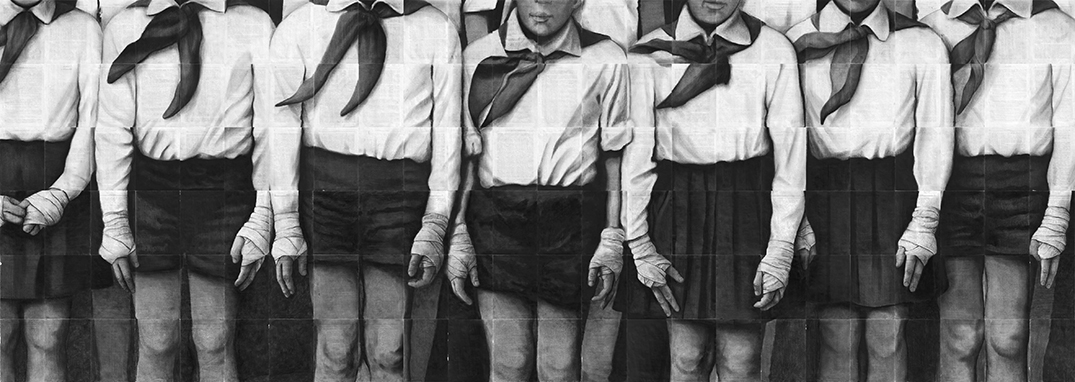The painting Night Watch was created under the agreements of the controversial investment project Belgrade Waterfront. By portraying the BDSM political scene on the ruins of Sava Mala district, the scene paints a picture of contemporary social relations, in which the perverted dominance of serious corrupt relations is growing within the ruling elite. The submissiveness of society towards this type of domination has led to a pathological masochism, in which the victim was brought to the stage of ecstasy of worshiping his master. On the other hand, starring at the capital’s waterfront, and criticizing it, we are forgetting and ignoring all of our local, micro BWs. Whatever their name is, they are part of the same system of demonstrating power.
The Night Watch is a paradigm of the sadomasochistic attitude between people, politicians and investors, which has long been the main functioning characteristic of the modern Serbian society.
_____________________________________________________________________________________________________________________________
115cm x 330cm | charcoal, 144 book pages | 2014
290cm x 275cm | charcoal, 300 book pages | 2015
_________________________________________________________________________________________________________________________________________
The Trilogy About the Boy Who... (2012) This trilogy under the title "The Trilogy About the Boy Who..." is composed of three large-format drawings, each holding a separate title: "The Boy Who Got Drawn in His Tears", The Boy Who Exploded from Happiness" and "The Boy Who Burned with Desire". The three works in three distinct ways treat the topic of self-sacrifice driven by various views and beliefs for the purpose of reaching certain goals. Despite the fact that each of the three cases involve different motives and aims, they are interconnected by the fact that all three boys sacrifice themselves, and accordingly open up some grand universal topics.
"The Boy Who Got Drowned in His Tears" deals with self-sacrificing that an individual makes deliberately in order to protect his environment. This drawing is inspired by a short story from the play Faust is Dead by Mark Ravenhill. In this story a boy who got disappointed with the world he lived in decided to "cry inside him" so that his mother could not notice his sorrow and concerns.
"The Boy Who Exploded from Happiness" is the second drawing of the Trilogy and it investigates ignoring social norms, social injustices and life in isolation when one confines himself to the limits of his hermetic world, nourishing his personal happiness there. Being so self-sufficient, he involuntarily makes sacrifices by "exploding" from an overdose of happiness. "The Boy Who Burned with Desire" is the last drawing of the Trilogy and it speaks about the demonstrative act by which an individual deliberately choses the radical from of self-sacrificing, wishing to point out and draw attention to something in a brutal way. In the moments when it is difficult to be noticed, and even more difficult to be listened to, very often it takes a shocking sensation to attract somebody's attention at least for a moment.
The Boy Who Got Drawn in His Tears | 220cm x 450cm | charcoal on book pages | 2012
The Boy Who Exploded from Happiness | 220cm x 450cm, | charcoal on book pages | 2012
The Boy Who Burned with Desire | 220cm x 450cm | charcoal on book pages | 2012
|




























